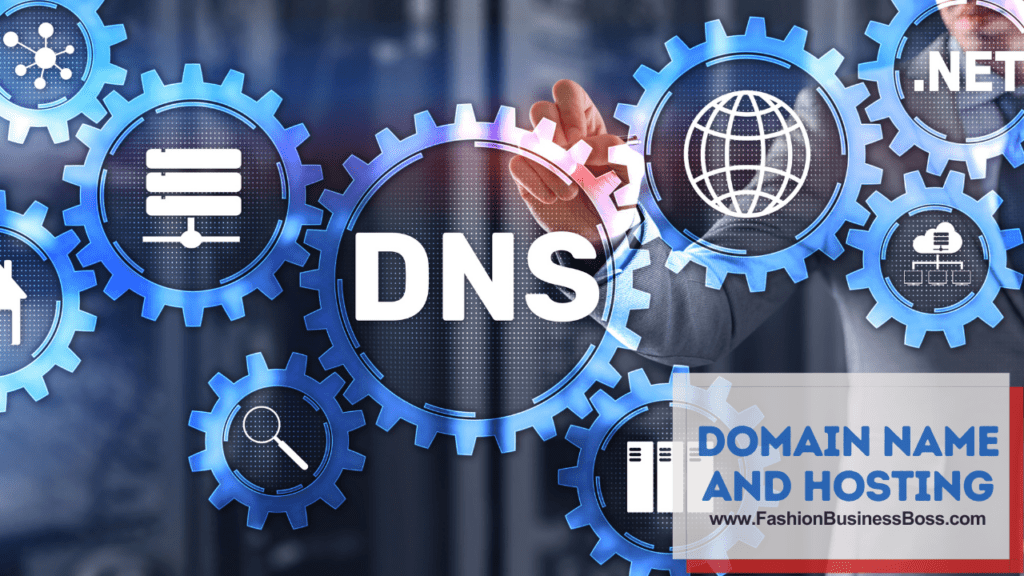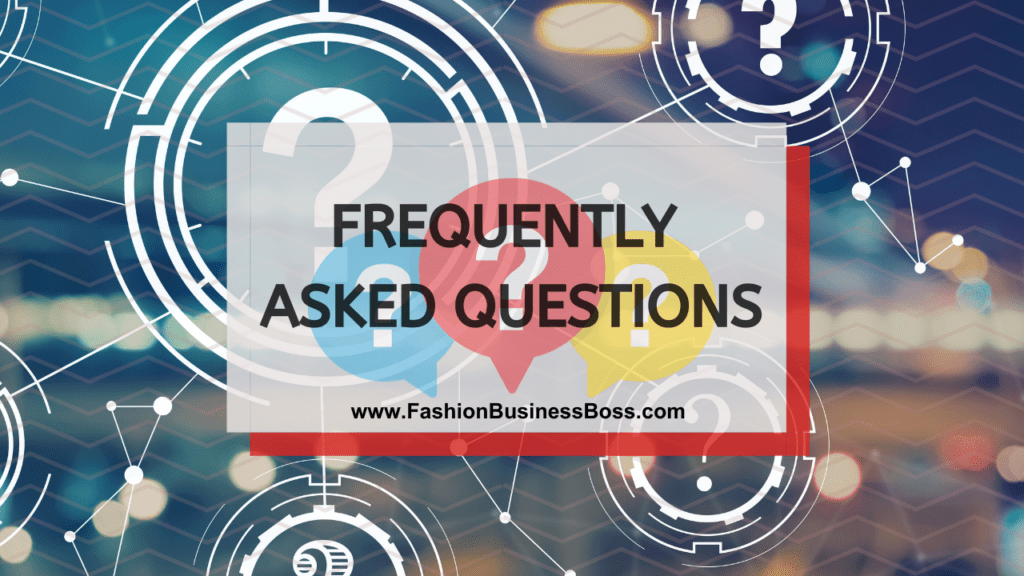The world of fashion is now largely online, and if you’re passionate about clothing and want to make your mark in this industry. Creating a clothing website is a fantastic idea. However, before you embark on this exciting journey, it’s crucial to understand the financial aspects.
To launch a clothing website, expenses vary. Domain and hosting: $100-$200/yr. Design: $1,000-$5,000. E-commerce platform: $29-$299/mo. Marketing, inventory, and maintenance costs fluctuate.
In this article, let’s delve into how much does it cost to make a clothing website.
Domain Name and Hosting

To establish your online presence, you’ll need a domain name, which serves as your website’s address, such as www.yourclothingbrand.com. Domain registration typically incurs an annual fee of around $10 to $20. Hosting is necessary to store your website’s files and make it accessible on the internet. Hosting costs can vary, usually falling within the range of $90 to $180 per year. The actual price depends on the hosting provider and the specific package you choose to accommodate your needs.
Therefore, it’s prudent to allocate approximately $100 to $200 per year for domain registration and hosting expenses. These expenditures are foundational as they ensure your website’s online existence and accessibility, making them the first steps in establishing your clothing brand’s digital presence.
Read more about: Clothing Retail 101: Starting Your Store
Website Design and Development
Crafting the appearance and functionality of your clothing website is a substantial expense. If you possess web design skills, you can economize by building the website independently. However, if web design isn’t your forte, engaging a professional becomes necessary. The cost of hiring a web designer can fluctuate significantly, primarily contingent on the intricacy of the website.
For those with minimal design needs, a simple website might cost around $1,000 to $2,000. More intricate websites, with added features and customization, could demand a budget of $3,000 to $5,000 or even more. The final cost hinges on factors like the number of pages, e-commerce functionality, and specific design requirements.
The expenses for website design and development can vary greatly. If you possess design skills, you can save money, but if not, it’s essential to budget appropriately, considering the complexity of your envisioned website. This investment ensures that your clothing website looks appealing and functions seamlessly, attracting potential customers.
E-commerce Platform
To sell clothing on the internet, you require an e-commerce platform. There are various options available, such as Shopify, WooCommerce (for WordPress users), and BigCommerce. These platforms offer different pricing tiers to suit various needs.
The basic plans typically begin at approximately $29 per month. These plans include essential features to start your online clothing store. However, if you desire more advanced functionalities, like inventory management or enhanced customization, you may opt for higher-tier plans, which can cost up to $299 per month.
The cost of your e-commerce platform varies depending on the features you need. If you’re starting small or have a limited budget, a basic plan around $29 monthly might suffice. As your online clothing business grows, you can consider upgrading to a more comprehensive plan. These e-commerce platforms provide the digital storefront for your products, making it possible for customers to browse and purchase your clothing items online.
Payment Processing Fees

To sell clothing on the internet, you require an e-commerce platform. There are various options available, such as Shopify, WooCommerce (for WordPress users), and BigCommerce. These platforms offer different pricing tiers to suit various needs.
The basic plans typically begin at approximately $29 per month. These plans include essential features to start your online clothing store. However, if you desire more advanced functionalities, like inventory management or enhanced customization, you may opt for higher-tier plans, which can cost up to $299 per month.
The cost of your e-commerce platform varies depending on the features you need. If you’re starting small or have a limited budget, a basic plan around $29 monthly might suffice. As your online clothing business grows, you can consider upgrading to a more comprehensive plan. These e-commerce platforms provide the digital storefront for your products, making it possible for customers to browse and purchase your clothing items online.
Read more about: Clothing Store Startup: Designing a Fashionable Future
Website Maintenance and Updates
Keeping your website in good shape is an ongoing expenditure. It involves tasks like updating product information, introducing new clothing collections, and addressing technical glitches. If these tasks are outside your comfort zone, you may need to enlist the services of a web developer.
The cost of hiring a web developer for maintenance and updates can fluctuate based on several factors. Typically, they charge on an hourly or retainer basis. The hourly rates can range from approximately $50 to $150 per hour. The exact price depends on the complexity of the work and the developer’s expertise.
The cost of maintaining and updating your website varies. If you possess the skills to manage these tasks yourself, it can save you money. However, if you find these technical responsibilities challenging, hiring a web developer can ensure that your website remains functional and up-to-date. It’s an ongoing investment to keep your online clothing store running smoothly and your customers satisfied.
Marketing and Advertising
Spreading the word about your clothing brand is crucial for its visibility. The expenses related to marketing and advertising can vary significantly based on your chosen strategy. Here are some common methods and their potential costs:
If you decide to advertise on platforms like Facebook, Instagram, or Twitter, you’ll need to allocate a budget. Costs can range from a few hundred to a few thousand dollars per month, depending on your targeting and ad type.
Maintaining an email marketing campaign involves costs for email software and potentially hiring a copywriter or designer. Monthly expenses may vary but can start at around $20 to $50.
Partnering with influencers to promote your clothing can also incur expenses, with fees varying based on the influencer’s reach and engagement.
The cost of marketing and advertising depends on your chosen methods and the scale of your campaigns. It’s crucial to budget for these expenses as they are essential for reaching your target audience and promoting your clothing brand. Careful planning and allocation of resources in this area can help your brand gain visibility and attract potential customers.
Photography and Content Creation

Compelling visuals and engaging content play a crucial role in the presentation of your clothing brand on your website. This includes high-quality images of your clothing items, appealing product descriptions, and possibly lifestyle or model shots. The costs associated with this aspect can differ significantly based on your brand’s unique style and preferences.
If you opt for professional photography, you may need to hire a photographer and possibly models. Prices can vary widely depending on the experience and reputation of the professionals you engage. Costs can range from a few hundred dollars to several thousand for a photoshoot.
Graphic designers can help create visually appealing banners, logos, and other graphical elements for your website. Their fees may also vary, depending on the complexity of the design work.
The expenses for photography and content creation can fluctuate based on the quality and professionalism you desire. It’s essential to budget accordingly to ensure that your clothing website showcases your products effectively. High-quality visuals and compelling content contribute significantly to attracting and retaining customers, making this aspect of your online presence vital.
Read more about: Counting the Costs: Building Your Fashion Empire
Inventory Costs
If you plan to sell clothing products directly through your website, you’ll need to invest in inventory. This means purchasing the clothing items you intend to sell. The expenses associated with inventory can fluctuate significantly based on several factors:
The cost depends on your clothing niche (e.g., luxury, casual, formal) and the variety of products you offer. High-end or specialized items may have higher price tags.
The number of clothing items you stock in your inventory directly affects costs. Buying in bulk might lead to volume discounts, reducing expenses per unit.
The cost of inventory is also influenced by your supplier’s pricing. Different suppliers offer various rates, and negotiating terms can affect your overall expenses.
In essence, the inventory costs are variable and highly dependent on your niche, the quantity of products you stock, and your supplier agreements. Careful consideration and budgeting in this area are essential to manage your clothing website’s financial health effectively. Properly managed inventory ensures that you have the products available to meet customer demand while controlling your costs.
Legal and Licensing Fees
Operating a lawful clothing business involves certain legal and licensing requirements that may incur costs. These expenses can fluctuate widely based on the specific needs of your business and your geographical location.
To protect your brand identity, you might consider registering your brand name or logo as a trademark. This helps safeguard your unique branding but involves fees that vary depending on the jurisdiction.
Depending on your location and the nature of your clothing business, you may need licenses or permits to operate legally. Costs for these can differ significantly from place to place.
Seeking legal advice or consulting with an attorney for business-related matters may also incur fees, which can vary based on the complexity of your needs.
Customer Support and Operations

It’s crucial to factor in the expenses related to providing exceptional customer service and managing everyday business operations. These costs can fluctuate based on the scale and complexity of your clothing business.
To ensure customer satisfaction, you may need to hire customer support staff or use customer service software. The costs associated with this depend on the size of your customer base and the level of support you want to offer.
Managing returns and exchanges is a part of running a clothing business. You’ll need to budget for processing returns and covering return shipping costs.
Addressing customer inquiries and concerns may involve expenses related to communication tools and personnel training.
The expenses in this category can vary significantly. Smaller businesses might handle customer support and operations with limited resources, while larger enterprises may allocate more funds to ensure a smooth customer experience.
Read more about: Crafting a Career: Getting into Clothing Design
SEO and Content Marketing
Achieving visibility on search engines like Google and drawing organic website traffic are pivotal goals for any online business. To attain these objectives, investing in SEO (Search Engine Optimization) and content marketing is essential. The costs associated with these endeavors can vary considerably based on your approach.
If you lack expertise in SEO, you may choose to hire an SEO specialist or agency to optimize your website for search engines. Costs for professional SEO services can range from a few hundred to a few thousand dollars per month, depending on the scope of work.
Creating high-quality content that resonates with your audience is integral to SEO growth. You might need to allocate resources for content creation, which can involve costs like hiring writers or designers.
To support your SEO efforts, you might need to invest in SEO tools and software, which can also add to your expenses.
The costs for SEO and content marketing are variable, contingent on your chosen strategy and whether you decide to manage these aspects internally or hire external expertise. Effective SEO and content marketing contribute to improved online visibility, drawing potential customers to your clothing website.
Conclusion
The cost of making a clothing website varies greatly depending on your specific needs and goals. While there are significant initial expenses, such as domain, hosting, and website development, ongoing costs for marketing, maintenance, and inventory management should also be considered. It’s essential to budget carefully and prioritize your investments to ensure your clothing website’s improvement in the competitive online fashion world.
Frequently Asked Questions

Q: What are the typical costs associated with domain registration and hosting for a clothing website?
A: Domain registration costs range from $10 to $20 per year, while hosting expenses typically range from $90 to $180 annually, depending on your hosting provider.
Q: How much should I budget for website design and development services?
A: Professional web design and development can cost between $1,000 and $5,000 or more, depending on the complexity and features of your clothing website.
Q: What are the pricing options for e-commerce platforms used in clothing websites?
A: E-commerce platforms like Shopify, WooCommerce, and BigCommerce offer various pricing tiers. Basic plans start at approximately $29 per month, while more feature-rich plans can go up to $299 per month.
To learn more about starting your own clothing business, check out my startup documents here.
Please note that the contents of this blog are for informational and entertainment purposes only and should not be construed as legal advice. Any action taken based on the information provided in this blog is solely at your own risk. Additionally, all images used in this blog are generated under the CC0 license of Creative Commons, which means they are free to use for any purpose without attribution.

Meet Shawn Chun: Entrepreneur and Fashion Business Fan.
I’m a happy individual who happens to be an entrepreneur. I have owned several types of businesses in my life from a coffee shop to an import and export business to an online review business plus a few more and now I create online resources for those interested in starting new ventures. It’s demanding work but I love it. I do it for those passionate about their business and their goals. That’s why when I meet a designer or boutique owner at a craft fair, farmers market, retail location or anywhere else I see myself. I know how hard the struggle is to retain clients, find good employees and keep the business growing all while trying to stay competitive.
That’s why I created Fashion Business Boss: I want to help fashion business owners like you build a thriving business that brings you endless joy and supports your ideal lifestyle.

